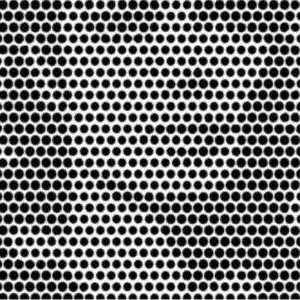The Fascinating World of Optical Illusions: Tricks of the Eye and Mind

ADVERTISEMENT
The Fascinating World of Optical Illusions: Tricks of the Eye and Mind
Optical illusions have intrigued and fascinated people for centuries. These visual phenomena occur when the brain interprets an image in a way that differs from reality, often leading to surprising and sometimes mind-bending effects. The study of optical illusions not only provides insight into how our brains process visual information but also reveals the complexities of human perception.
What Is an Optical Illusion?
An optical illusion is a visual image that is perceived differently than how it physically exists. In essence, what you see is not necessarily what is there. Optical illusions can occur naturally or be created deliberately, and they often play tricks on our perception, making us see things that are not true or miss things that are there.
Optical illusions exploit the way our brains interpret visual information. The brain uses a variety of cues to understand what the eyes see, including color, light, shadow, perspective, and context. When these cues are manipulated or presented in unusual ways, they can lead to a distorted perception of reality, resulting in an optical illusion.
Types of Optical Illusions
There are several types of optical illusions, each affecting our perception in different ways:
- Literal Optical Illusions: These illusions create images that are different from the objects that make them. A well-known example is the famous “Young Woman, Old Woman” illusion, where a single image can be seen as either a young woman or an old woman, depending on how you look at it.
- Physiological Optical Illusions: These illusions occur due to the overstimulation of the eyes and brain, often through brightness, color, or movement. The afterimage effect, where a bright image appears to linger in the vision after looking away, is an example of a physiological illusion.
- Cognitive Optical Illusions: These illusions occur because of unconscious inferences made by the brain. They involve our knowledge of the world and how we expect things to appear. The famous “Penrose Triangle” is a cognitive illusion that tricks the brain into seeing a three-dimensional object that cannot possibly exist in reality.
- Ambiguous Optical Illusions: Ambiguous illusions are images that can be interpreted in more than one way. The brain can flip between different interpretations, creating a shifting perception of the image. The “Necker Cube,” which can be seen from two different perspectives, is a classic example.
- Paradoxical Optical Illusions: These illusions involve objects or images that seem to defy logic and physical laws. The “Impossible Staircase,” also known as the Penrose stairs, is a famous paradoxical illusion where the staircase appears to loop endlessly in a continuous climb or descent.
How Optical Illusions Work
Optical illusions work by exploiting the brain’s shortcuts in processing visual information. The brain is a highly efficient organ that often uses assumptions, past experiences, and context to quickly interpret what the eyes see. However, these shortcuts can sometimes lead to incorrect conclusions, resulting in an optical illusion.
ADVERTISEMENT
For example, when viewing a pattern of dots, the brain might try to connect them into lines or shapes that aren’t actually there. Similarly, when looking at an image with contrasting colors or brightness, the brain might exaggerate the differences, creating an illusion of movement or depth.
Optical illusions also take advantage of the brain’s reliance on perspective and context. A well-known example is the “Müller-Lyer illusion,” where two lines of equal length appear to be different lengths because of the orientation of the arrowheads at their ends.
Famous Optical Illusions
Several optical illusions have become famous for their ability to baffle and amaze viewers:
- The Hermann Grid: This illusion involves a grid of black squares separated by white lines. When you look at the grid, gray dots appear at the intersections of the white lines, but when you focus directly on an intersection, the gray dot disappears.
- The Café Wall Illusion: In this illusion, parallel lines appear to be slanted or curved because of the alternating pattern of black and white tiles. The effect is so named because it was first noticed on the tiled wall of a café.
- The Kanizsa Triangle: This illusion shows three Pac-Man-like shapes arranged to suggest the outline of a triangle. Even though no triangle is actually drawn, most people perceive one, illustrating how the brain fills in missing information.
- The Spinning Dancer: This is an ambiguous optical illusion in which a silhouette of a dancer appears to spin. Some viewers see the dancer spinning clockwise, while others see her spinning counterclockwise. The direction can even seem to change spontaneously, highlighting how perception can vary between individuals.
Applications of Optical Illusions
Optical illusions are not just fun visual tricks; they have practical applications in various fields:
- Art: Artists have long used optical illusions to create engaging and thought-provoking works. The Op Art movement, for example, is based entirely on creating optical illusions through the use of patterns, colors, and shapes.
- Psychology: Studying optical illusions helps psychologists understand how the brain processes visual information. By examining how and why illusions occur, researchers gain insights into human perception and cognition.
- Design: Optical illusions are used in design to create interesting visual effects, such as 3D pavement art or advertising that grabs attention. They are also used in architecture to manipulate the perception of space and depth.
- Vision Therapy: Some optical illusions are used in vision therapy to help improve visual processing and coordination. Exercises involving illusions can train the brain to interpret visual information more accurately.
Conclusion
Optical illusions offer a fascinating glimpse into the complexities of human perception. They reveal how our brains process visual information and highlight the sometimes surprising ways in which we perceive the world around us. Whether they are used in art, psychology, or simply as a source of entertainment, optical illusions continue to captivate and challenge us, reminding us that seeing is not always believing.
ADVERTISEMENT
So, the next time you encounter an optical illusion, take a moment to appreciate the incredible interplay between the eyes and the brain. These visual puzzles not only entertain but also deepen our understanding of how we perceive the world, demonstrating the intricate workings of the human mind.




